Makgeolli is a Korean rice wine that was traditionally home-brewed. The complex and robust flavors of this drink pairs wonderfully with all Korean foods but most wonderfully with flavorful foods like Kimchi and Korean BBQs.

What is Makgeolli?
Makgeolli (막걸리) or Makkolli is a traditional Korean alcoholic beverage (술 sool) brewed from rice and a fermentation starter called nuruk 누룩. It is traditionally a ‘fast’ or ’emergency brew’ which can be ready in 7-10 days and is made in a single step fermentation (Danyangju 단양주). In the old days, people brewed it in each home and served as everyday drink as well as for special occasions like weddings.
BTW, in English, Makgeolli is often referred to as ‘Korean rice wine’ but honestly if you asked me, I would say it should be called ‘rice beer’. I say this mainly because of the way the beverage is made. Wine is typically made from crushed fruits which already have the sugars that naturally lead to fermentation. While Magkeolli, the rice grains are first cooked to convert the starches contained within the grains into sugars that the yeast can consume.
I have read in some online posts that because Makgeolli has a low alcohol content of ABV from 6-11%, it’s similar to beer but that’s really not correct. Because the 6-11% ABV is artificially made by diluting the original wine. Original homemade natural Makgeolli has actually around 16% ABV (see my post for how I got this number) which is much higher than most beers.
What does (original) Makgeolli taste like?
This Korean rice wine or rice beer is a milky and often fizzy drink having a complex flavor profile that also has sweet, sour, with even a little bit of bitter tastes. Homemade version is a lot more complex and has a depth of flavor that’s both clearing and appetizing. It can also have a fruity, dusty, floral aroma with a bit of chalky texture. It is a great filling drink that tastes great on its own but even better with Korean food.
History of Makgeolli
This is the oldest alcoholic drink in Korean cuisine that dates back to Goryeo (고려) Dynasty (918-1320) and some say there are traces of this wine even back to the Three Kingdoms era (57 BC to 668 AD). Makgeolli is a brewed rice wine, traditionally made of just 3 ingredients: rice, water and nuruk. Nuruk is a unique fermentation starter that contains yeast and bacteria that break down the rice to produce alcohol – making this rice wine an alcoholic drink.
Makgeolli was considered a “farmer’s wine (Nongju 농주)” because of the high nutritional content and carbonation, it was a great refreshing energy drink for farmers. When I was a child, I distinctly remember seeing farmers and construction workers drinking this white colored drink in a shallow bowl (사발) every afternoon during their break.
Farmers or other labor workers (like for construction) would get quite upset 😝 if they didn’t get this drink during their snack time. I remember my mom hearing an earful from a construction worker one time when she brought them some red bean pastry and milk for snack —
“How do you expect us to do all this hard work when there’s no makgeolli!!?”
“WE NEED MAKGEOLLI to keep us GOING!!!”
Next day, makgeolli and buchimgae (pancakes) was served and all was right in the world again… 😝👍🏼😝
When I saw that scene, as a kid, I thought that they were all maybe alcoholics??!! But I realize today this was more than a simple alcoholic drink for them, it was part of daily life for these hard working Koreans. Makgeolli helped the workers regain their energy with its nutrition and health benefits to continue for another few hours before their hard day was over.
Makgeolli vs Soju – Which is better? How are they different?
Soju is a distilled liquor made by distilling alcohol from fermented grains like rice, barley, sweet rice in the old days but in modern days, they are distilled from other starches like corn, sweet potatoes, etc. So soju has a very clean, mild and in someways almost tasteless when compared to Makgeolli.
I would say Makgeolli is a lot more of an interesting drink than Soju. But Makgeolli is a bit heavier tasting due to the milky mildly yogurt like sweet sour flavors so whatever you prefer.
Makgeolli Alcohol Content
Commercially sold makgeolli usually contains between 6 – 9% alcohol content. Traditional brews start with 12-18% alcohol content but in recent years, companies started to dilute the original wine with water to lower the alcohol content down to 6-9% so that they could sell to a wider audience and also make it easier to export.

How to Drink and Store Makgeolli
- Serve COLD (white wine serving temperature works) in small, shallow bowls or only fill cup partially
- Mixed – you will usually see sediments at the bottom of the bottle. Gently mix by turning bottle upside down and up a few times.If unpasteurized, it may kind of explode. Open and close the cap, repeat to let the gas out a little at a time but not the content.
- Unmixed – Some prefer to drink the top clear liquid without the rice sediments. Let sediments settle to the bottom and DO NOT mix but just carefully pour the top clearer liquid out. This will also reduce calories of the drink.
- Shelf Life – pasteurized ones are good for even few months. Unpasteurized, Saeng (Draft) ones are different. Some draft wines are good for 30 days and even up to 60 days. They all need to be refrigerated and even with refrigeration, it will continue to ferment with taste changing over time. Once opened, it is best to consume within couple days.
- Pair with grilled meats, kimchi, or jeons like kimchi pancake, bindaetteok,and pajeon.
How is Makgeolli made?

NEW!! Check out my Makgeolli recipe post if you want to make it yourself. You can also watch my youtube video on how to make it!
The basic makgeolli recipe is quite simple in concept because it just involves steaming rice then mixing the cooked rice, water (usually in 1:1 ratio) and nuruk (which is a brewer’s yeast made from wheat cake). You brew for 7-10 days while stirring the first 3-4 days and then filter when done. During fermentation, you will see bubbles in the mixture which is the carbon dioxide
And then you either drink it straight or dilute with water 1:1. The exact ratio of the rice, water and nuruk however, can vary from recipe to recipe.
I have done extensive testing to come up with the best recipe so please try it!!

FYI – these are 2 bottles made during a Makgeolli making class in Seoul, using the same recipe but by different people. BTW, if you are interested in makgeolli making and you get to visit Seoul, I highly recommend this class.
| Name of Makgeolli | Added Ingredients (besides rice, water, nuruk) | Brand |
|---|---|---|
| Saeng Makgeolli 생막걸리 | Citric Acid, Lactic Acid, Glucose, Rice Flavors, Carbon Dioxide, Phenylalanine | Gooksoondang (export) |
| Uguk Saeng 우국 생 | Licorice, Aspartame | Gooksoondang (domestic) |
| Guksundang Ssal Makgeolli *pasteurized 국순당 쌀 막걸리 - 무 아스파탐 | High fructose corn syrup, Citric acid, Lactic acid, Carbon dioxide | Gooksoondang (export) |
| Yidong Ssal Makgeolli 이동 쌀 막걸리 | Aspartame,(pasteurized) | Yidong |
| Seoul Jangsu Saeng Makgeolli 서울 장수 생 막걸리 | Maltooligosacharide, Red Ginseng, Aspartame, Citric Acid | Seoul Jangsu |
| Wolmae Ssal Makgeolli 월매 생 막걸리 | Maltooligosacharide, Aspartame, Citric Acid(pasteurized) | Seoul Takju |
| Horangyi Saeng Makgeolli 호랑이 생 막걸리 | Yeast, Lactic Acid, Erythritol | Baehyejeong |
| Neurin Maeul 느린마을 | Yeast | Baesang Myeonjuga |
| Go (고) aka Yetnal (옛날) | Fructose, Yeast | Gooksoondang (domestic) |
| Boksundoga 복순도가 | Starch Syrup, Aspartame | Boksundoga |
| Dameun 담은 | High Fructose Corn Syrup, Enzyme | 1932Pocheon |
| Handmade Makgeolli | None (*Sweet Rice instead of Rice) | Sulawon |
** NOTE, the content may be different for exported versions and they may also change with time. Please reconfirm the content before you buy or drink.
As of 6/4/2018 I have confirmed (via phone call to headquarters!! – yes, the things I do for you all!) that all exported wines by Gooksoondang no longer contain Aspartame!!! But I couldn’t confirm whether it was the case for domestic wines…
The above table is roughly ordered in terms of their price (in Korea). The last 3 makgeolli’s are from craft breweries that claim to use no Aspartame and only good quality ingredients. And their price shows it as they are all about 10 times (yes! 10 times!!) more expensive than the first 6, ranging around $1-2 in Korea. The middle 3 range around $2-4.
Makgeolli Health Benefits
If made the traditional way with no pasteurization, makgeolli has great health benefits. The major benefit is that makgeolli (if not pasteurized) has tens of millions of live cultures in just 1 ml. Mainly it has 2 kinds of yeasts – Pichia and Saccharomyces and then the very well-known probiotic bacteria Lactobacillus plantarum (most often found in yogurt, kimchi, sauerkraut).
Although.. as one puts it, the amount of the beverage you have to drink to get the full benefits will easily make you an alcoholic… LOL.. 🤣😂
In addition, it is high in fiber, vitamin B, C and low in cholesterol. However, it is also high in carbohydrates which results in about 54 kcal for 100 ml.
The higher calorie content was actually a good thing in the old days when Koreans didn’t have a high-calorie diet. Note that the live cultures exist only in Saeng (Draft) Makgeolli 생막걸리 and NOT in any that say Salgyeun Takju 살균탁주. If it doesn’t say it’s Saeng 생, it could well be pasteurized. A very good reason why you want to make your own at home if you cannot get unpasteurized ones.
Until recently, almost all bottled makgeolli’s had added sweeteners like Aspartame. Although Aspartame has so far been determined to be safe and has not been shown to have any adverse health effects, many Koreans have started to criticize the use of Aspartame in these drinks.
Due to this new trend, there are now many companies and craft breweries in Korea that make makgeolli without Aspartame or other artificial ingredients. In my table below, you will see that there are a few that do not include any artificial or unhealthy sweeteners. And to me, these few are not only better quality but also taste the BEST.
Makgeolli Taste Profiles
| Name of Makgeolli | Sweet | Sour | Fizzy (Less = 1, More = 5) | Body (Thick =1, Light = 5) |
|---|---|---|---|---|
| Saeng Makgeolli | 3 | 2 | 4 | 3 |
| Uguksaeng | 3 | 2.5 | 3.5 | 2.5 |
| Guksundang Ssal Makgeolli | 3 | 2 | 1 | 3 |
| Yidong Ssal Makgeolli | 3 | 1 | 1 | 3 |
| Seoul Jangsu Saeng Makgeolli | 2 | 3 | 3 | 3 |
| Wolmae Ssal Makgeolli | 3 | 2.5 | 3 | 3 |
| Horangyi Saeng Makgeolli | 4 | 1 | 2 | 4 |
| Neurin Maeul | 3 | 1 | 3 | 2 |
| Yetnal | 2 | 2 | 1 | 2 |
| Boksundoga | 2 | 3 | 5 | 2 |
| Dameun | 3 | 1 | 1 | 2 |
| Handmade Makgeolli | 2 | 3 | 3 | 2 |
These taste profile sources are from a Korean site called http://www.jurojuro.com/ except for Handmade Makgeolli which does not appear in the site since it is quite new and is not sold at stores but only at select Makgeolli bars. So those numbers are based on my recollection of how it tasted.
What are my favorites?
My top 3 would be Go, Handmade and Boksundoga. In terms of taste only, Handmade by Sulawon is by far the most delicious, robust and complex. It tastes truly homemade and the ingredients are just simply 3. But it is not cheap. Also is not available widely even in Korea. UPDATED 9/25/2023 – It’s not clear if the Sulawon is still in business. I was not able to find it online when I checked.
Boksundoga is quite fabulous in that it tastes like Makgeolli champagne. I LOVE fizzy drinks so this was a very fun drink to have. But I was disappointed to learn that it contained Aspartame and the price is high – in the $10 range.
Kooksoondang‘s Go/Yetnal wins the #1 SPOT for both my husband and I, because it is dry and not sweet, has a wonderful fruity but also musty, a little sour with a full body. It’s not very sparkly though..

Now, I know none of the above are available in the US. In the US, our favorite is Kooksoondang Saeng Draft Makgeolli 국순당 생 막걸리 (the green bottle). It is a bit on the sweeter side but it is fully live with active cultures and has a good balance of flavors. If there’s one thing I would recommend is that you avoid the pasteurized 살균탁주 since it has no big health benefits. The taste is smoother though, it’s always up to you. 😉
Well, it was a lot of work but I hope you find this info useful. Please let me know how you like it and share with your friends if you can! Please stay tuned for my upcoming post on how to make makgeolli and my recent trip to Seoul.
Geonbae! 건배! Cheers!
XOXO ❤🍻 , JinJoo








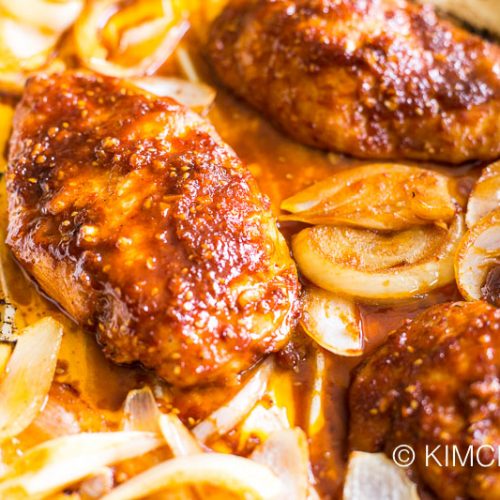
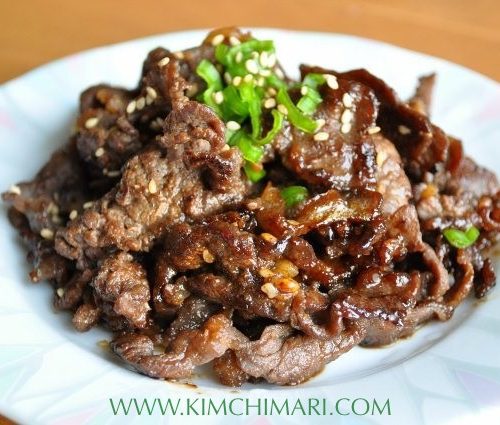
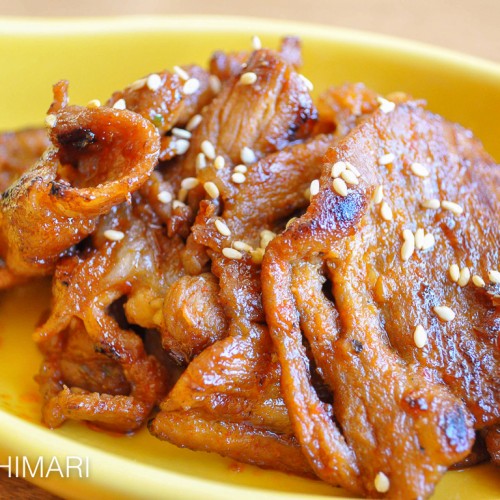
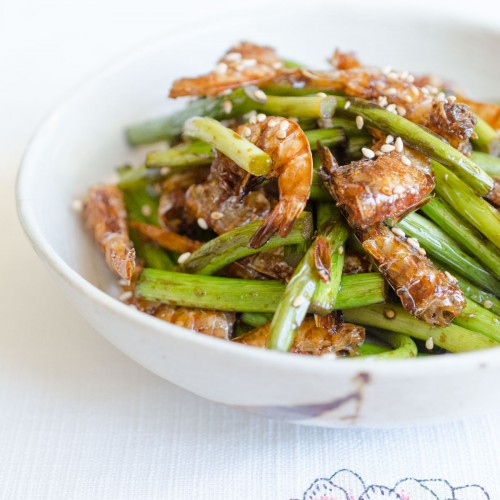
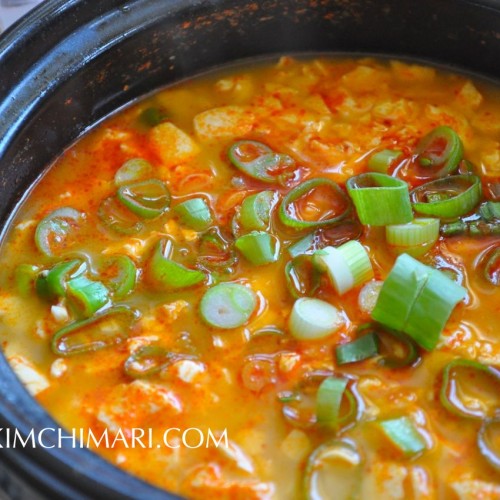
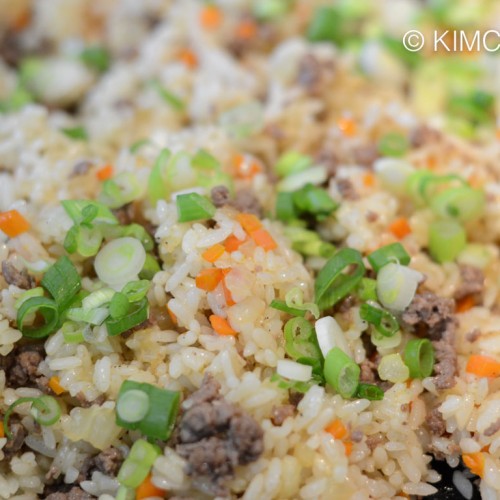
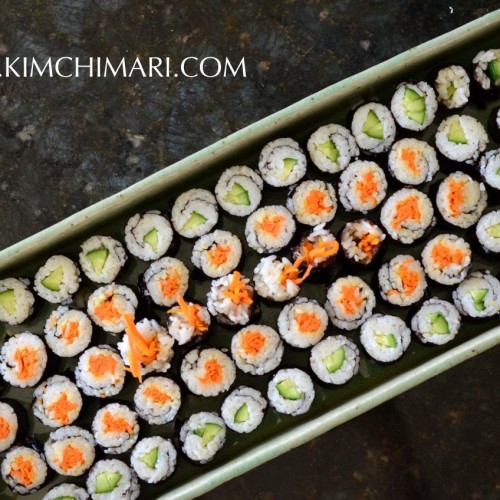
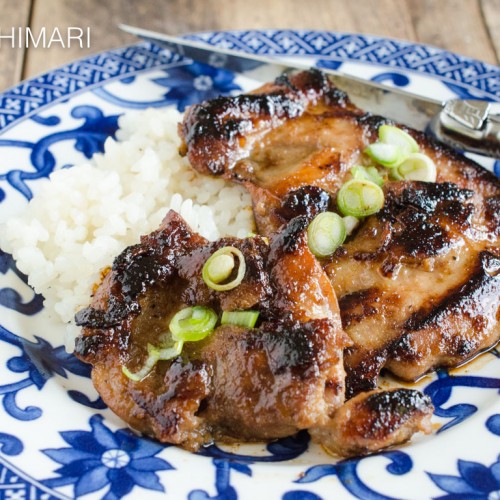
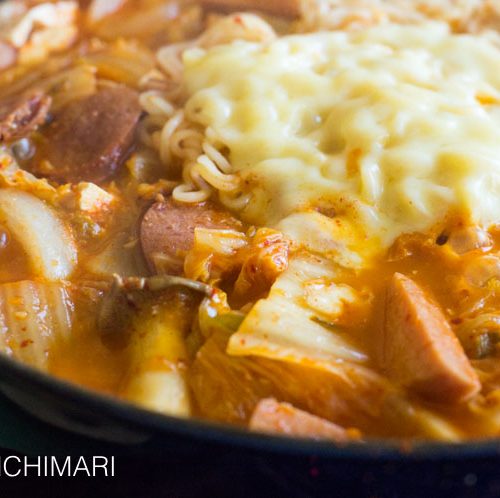
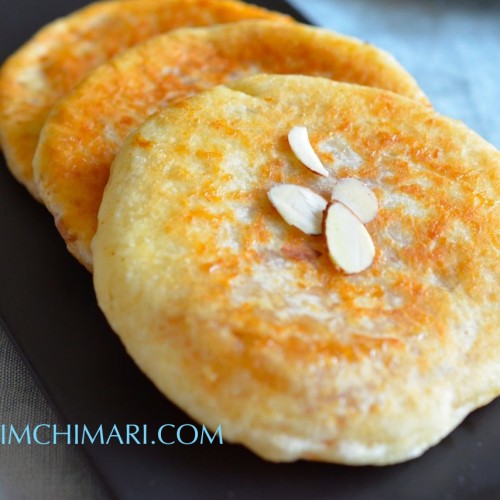







Great post! I’ve made Makgeolli and am getting ready to make some more today or tomorrow and for anyone who wants to make their own, my best advice is to be sure to rise the rice really well before soaking it and even after soaking, it’s good to rinse it again. You’ll find you get a more clear, smooth flavor.
Yup – as I mention in my Makgeolli recipe, some traditional recipe says to rinse the rice 100 times!! But I usually do about 5-6 times. Thank you for sharing!
has anyone tried re-pitching the sediment from one bactch to start the next? we do it with beer all the time.
I drove to Haechang and purchased directly from the Hanchang makgeolli maker directly. No aspartame in this makgeolli. A little pricey ($64 for a case of 6 12%) but it is far and away my favorite. I am going to get some of their 18% (which cost in the neighborhood of $100 a bottle) just so I can experience what real takju tastes like. I’m on a quest to try every premium makgeolli in Korea. I have also tried some homemade dongdongju procured locally and I have not been disappointed.
Wow – I’m jealous!! I did try a few premium Makgeolli and now I make my own at home.. yes, absolutely no comparison to the cheaper storebought ones..Glad you are on this quest – would love to hear back on your findings! Cheers!!